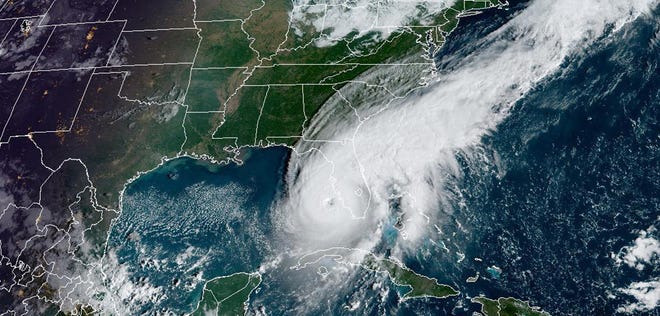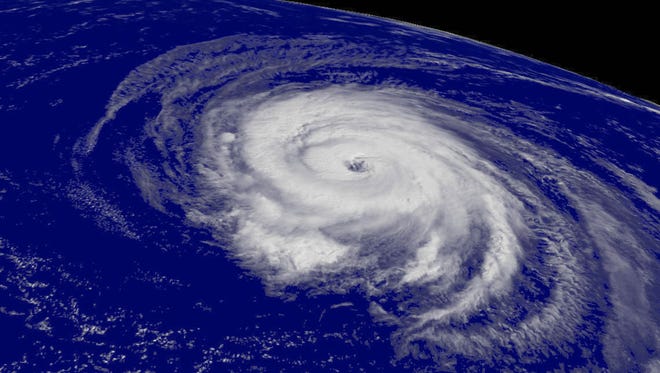It's almost hurricane season. Here's the list of names for the 2023 Atlantic hurricane season.
Will Arlene, Gert or Whitney be brewing in our future?
They are among the storm names you could hear when the six-month Atlantic hurricane season soon kicks off.
The season officially begins June 1, and forecasters, in general, are predicting a near- to slightly below-average year. This is in part because of the influence of an expected El Niño, which tends to reduce Atlantic hurricane activity.
A typical year averages about 14 tropical storms, seven of which spin into hurricanes, based on weather records that date from 1991 to 2020.
A tropical storm gets a name when its sustained winds reach 39 mph; it becomes a hurricane when its winds reach 74 mph.
The World Meteorological Organization, based in Geneva, Switzerland, chooses hurricane names several years in advance, based on a strict criteria. If a hurricane is particularly deadly or costly, then its name is "retired" by the WMO and replaced by another one.
Here comes El Niño:Scientists warn an El Niño is likely coming that could bring scorching heat to Earth
Here is the list of names for the 2023 Atlantic hurricane season:
- Arlene
- Bret
- Cindy
- Don
- Emily
- Franklin
- Gert
- Harold
- Idalia
- Jose
- Katia
- Lee
- Margot
- Nigel
- Ophelia
- Philippe
- Rina
- Sean
- Tammy
- Vince
- Whitney

If all 21 names are used this year, there is a supplemental list of 21 names that will be used after Whitney. Here is that list, from the WMO:
- Adria
- Braylen
- Caridad
- Deshawn
- Emery
- Foster
- Gemma
- Heath
- Isla
- Jacobus
- Kenzie
- Lucio
- Makayla
- Nolan
- Orlanda
- Pax
- Ronin
- Sophie
- Tayshaun
- Viviana
- Will
Prior to 2021, the Greek alphabet was used if the primary list was exhausted, using such names as Alpha, Beta, Gamma, Delta and beyond. But that naming system has been discontinued, partly because of confusion over the Greek alphabet.
Hurricane forecast:How bad will the 2023 hurricane season be? Why this year's forecast comes with 'large uncertainty'

Why – and how – do hurricanes get names?
Before they started naming storms, hurricane forecasters had to refer to storms by saying something like, "the storm 500 miles east-southeast of Miami." But six hours later, the storm's position would change.
Also, when more than one storm was going on at the same time, making it clear which storm was being described made the job even harder.
In 1953, the U.S. began using female names for hurricanes and, by 1979, male and female names were used. The names alternate between male and female.
Here's how to pronounce all of the 2023 hurricane names.
The names are alphabetical and each new storm gets the next name on the list.
There are no Q, U, X, Y or Z names because of the lack of usable names that begin with those letters.
Retired hurricane names:Ian, Fiona retired from list of hurricane names because of 2022 death and destruction
Eastern Pacific hurricane names
There is a separate list for tropical storms and hurricanes that form in the eastern Pacific Ocean:
- Adrian
- Beatriz
- Calvin
- Dora
- Eugene
- Fernanda
- Greg
- Hilary
- Irwin
- Jova
- Kenneth
- Lidia
- Max
- Norma
- Otis
- Pilar
- Ramon
- Selma
- Todd
- Veronica
- Wiley
- Xina
- York
- Zelda
Eastern Pacific hurricanes seldom have any direct impact on the U.S., though they can batter the west coast of Mexico. The eastern Pacific season began on May 15, more than 2 weeks earlier than the Atlantic season.
There is a separate list of names for Central Pacific hurricanes, which can occasionally impact Hawaii. In addition, there are also separate lists for typhoons in the western Pacific and tropical cyclones in Australia and the Indian Ocean.
No comments: